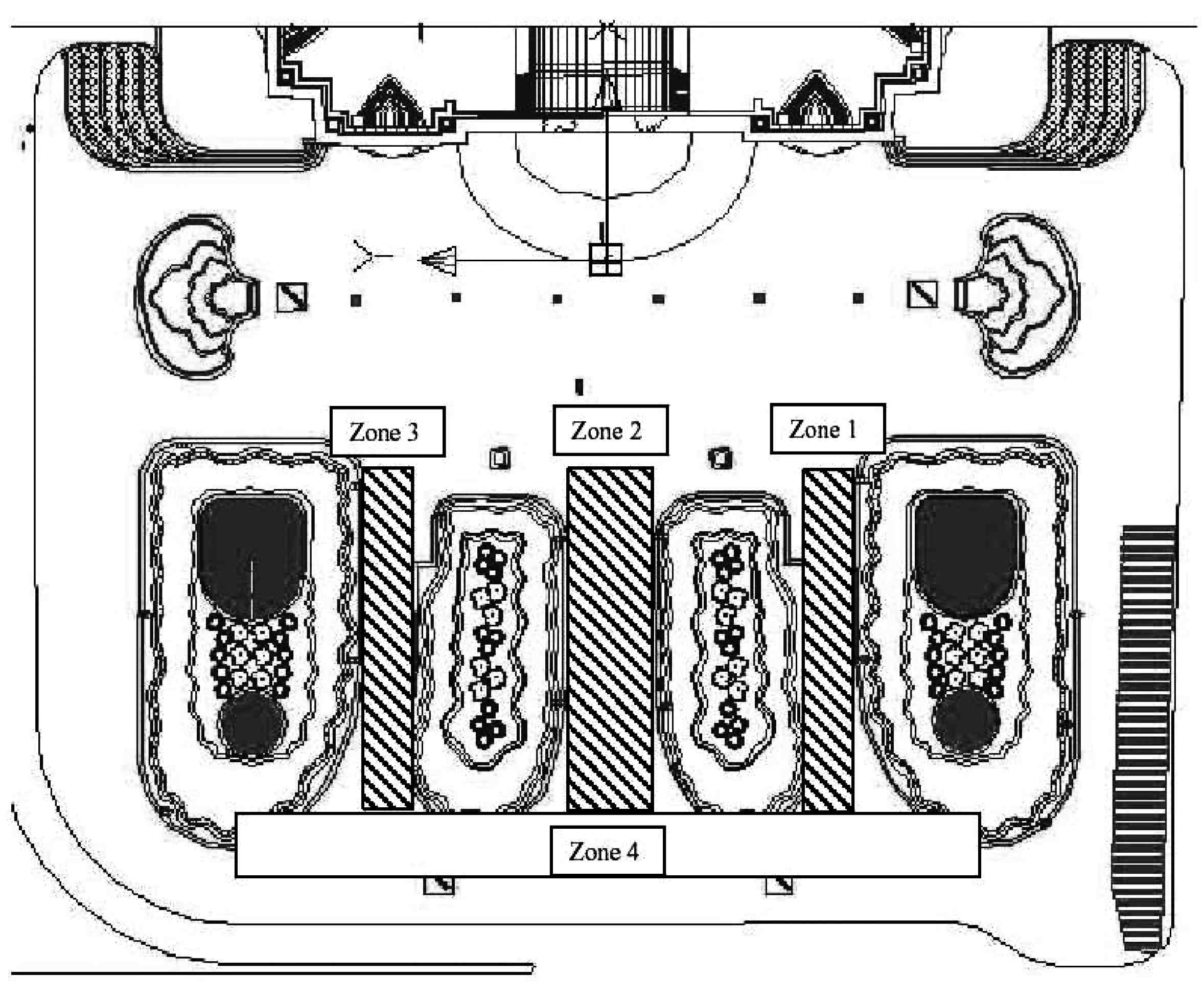 |
 |
B-36-A for 19 ditigal tracks 28:00 2005
Excerpt Stereo Version

This work was commissioned for the project “Oasis Sonoro” in which 12 Mexican and international composers participated. I am presenting a 4 track version of the piece (and a stereo reduction), since the original version can only be played with the virtual 3D system designed by the illustrious company.
It was planned as a composition-installation for specific site, destined to be played during one month from 12 to 2 PM in the jardinieres of Bellas Artes Plaza in Mexico City. The main idea was to recuperate the sounds from the Plaza and from the places around it (two blocks in every direction), and to transform them into abstract sounds with different densities that would envelope the public, but that would also allow them to interact with the surrounding sounds.
In this way, the abstract sounds were conformed mainly by granular rhythmic-stochastic textures and stretched granulated sounds. Other sounds were created with cross-synthesis (convolution) between sounds inside the Bellas Artes Palace and the exterior sounds (hybrid sounds like clapping hands in the concert hall mixed up with birds and traffic sounds from the street for example). These last processes were done aiming to connect the sound life inside the building frequented by minorities, with the exterior sounds where many people from different social classes coexist.
The structure of this work was determined by the relationship between noise and frequency sound masses (of a continuos character), and rhythmic-stochastic sound masses (with a discontinuous character). On the other hand, it was based in the scheme of spatialization of sounds designed for this acoustic space consisting of 3 independent zones, a global zone (determined by these 3 zones together), and a complementary zone in the two extremes of the global zone with two high speakers.
Although the density of some of the recorded and transformed sounds was big, I managed to extract essences from the surrounding “noise” masses. By way of using the techniques of granular stretching for example, car horns from traffic became like a rare chorus, a barking dog was converted into a cante hondo, and the whistles of the traffic officers were transformed into a sound scape of crickets. On the other hand, by way of stochastic granulation’s, some sounds (like the applause’s in the concert hall) were converted into flocks of birds that fly from one place to the other, and others were transformed into interesting organic rhythmic textures. It was like trying to create a new complex world of sound masses starting from the real one, whose new color, texture and density qualities would put us back into the practice of acoustic perception. This kind of exercise has disappeared in this type of urban sound spaces that have a high degree of dB levels.
The title of B-36-A is a metaphor of an address, a specific site in the historical center of Mexico City. The address includes the number of transformed sounds in the composition. It seems as if the spirits of sounds that once lived (the recorded original sounds) have become now sonic phantoms that will move once more in the space of the Plaza de Bellas Artes, the epicenter of their circle of existence.
.jpg)
A partir de muestras de los sonidos que circundan la Plaza de Bellas Artes a distintas horas del día, me interesa reconocer texturas (fondos) y figuras (sonidos claros) predominantes, para luego trabajar a partir de ellos y crear sonidos abstractos mediante granulaciones, desfasamientos, disolvencias, etc. Se trata de generar procesos en los que los sonidos figura surgen de esos fondos de manera sutil, y luego de manera abrupta en la realidad (cuando azarosamente aparezcan). Lo interesante es que los sonidos figura pueden también convertirse en sonidos fondo (mediante la granulación, etc), y los sonidos fondo pueden devenir sonidos figura (mediante procesos de filtraje, etc). Finalmente, estos procesos sonoros nuevos también podrán disolverse por completo para dar un lugar privilegiado a los sonidos del paisaje sonoro circundante y crear así un campo de diferenciación entre unos y otros.
De los procesos de trabajo usados se deduce una metáfora: construir una espacio sonoro delimitado a partir de uno mas grande nos sugiere una arquitectura fractal, ya que usaremos los mismos timbres de los elementos existentes para realizar una nueva morada sónica.